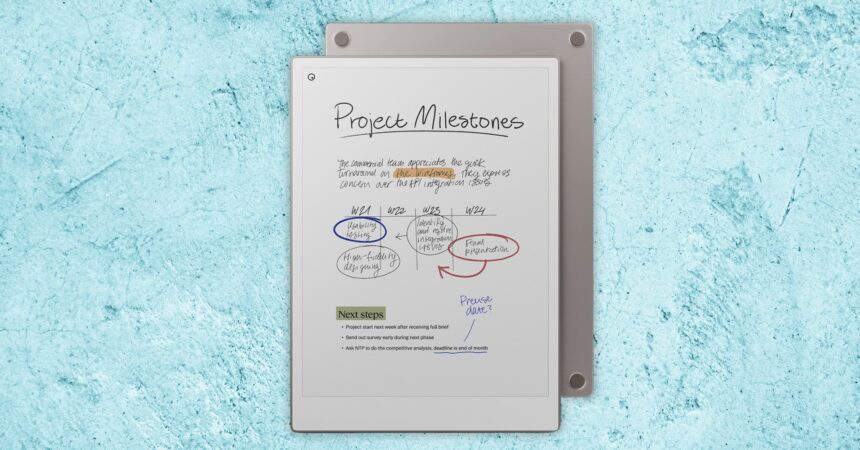The Evolution of Note-Taking: A Deep Dive into Digital and Paper Notebooks
In a world where information constantly bombards us, effective note-taking has become an essential skill for students, professionals, and creatives alike. The age-old dilemma of whether to go digital or stick with traditional pen and paper continues to challenge individuals as they seek the best method to capture their thoughts. This blog post will explore the rise of digital note-taking devices, compare them with traditional methods, and provide insights into current trends and future developments in this ever-evolving field.
Why Notes Matter
From daily to-do lists to lecture notes and brainstorming ideas, writing has a profound impact on our memory retention and comprehension. Psychologists and educators have consistently found that the physical act of writing enhances learning. According to a study published in Psychological Science, students who take notes by hand tend to understand and remember concepts better than those who type them on a laptop. The tactile experience, along with slower writing speeds, allows the brain more time to process the information.
The Rise of Digital Note-Taking
Despite the benefits of handwriting, the digital landscape has surged with innovative technologies designed to enhance how we take notes. Enter digital notebooks, E Ink tablets, and smart pens—devices engineered to bridge the gap between the physical and digital worlds.
The Pros of Digital Note-Taking Devices
-
Convenience: Digital devices often come equipped with cloud syncing capabilities, allowing users to access their notes across multiple platforms. This is particularly handy for students or professionals who need to reference their notes from different locations or devices.
-
Searchability: Unlike traditional notebooks, digital notes can be easily searched, making it simpler to find specific information during study sessions or work meetings.
-
Storage: Digital notebooks can hold thousands of pages in the palm of your hand. This portability means reduced clutter and the ability to carry all your notes without the weight of multiple notebooks.
- Multimedia Options: Many digital note-taking apps allow for the incorporation of images, audio recordings, and even videos, giving users various ways to enrich their notes.
The Cons of Digital Note-Taking Devices
-
Cost: Digital note-taking devices can come with a hefty price tag, often costing several hundred dollars, which can be a barrier for some users.
-
Dependency on Power: Unlike traditional pens and paper, digital devices require battery life, which can be an inconvenience during long days away from power outlets.
-
Learning Curve: Different devices and software come with various functionalities that can feel overwhelming at first, necessitating time spent on learning these tools.
- Need for Specific Accessories: Some smart pens require special notebooks, which can be a nuisance and add ongoing costs.
Current Market Trends
Recent advancements in digital note-taking technologies have taken center stage. For instance, the newly released Amazon Kindle Scribe has garnered attention for its enhanced writing experience but has faced comparisons with its competitors like Kobo’s digital notebooks. The latter has retained popularity for its simplicity and user-friendly interface.
The Iskn Repaper tablet, known for its ability to digitize handwritten notes instantly, has moved to honorable mentions due to availability challenges, sparking interest in demand for alternative devices.
Looking ahead, innovations in digital note-taking are set to accelerate with devices such as the anticipated Nuwa Pen, which promises to bring smart technology to any paper note, offering unparalleled flexibility.
Traditional Paper Options
For die-hard fans of the pen-and-paper approach, traditional notebooks provide a tactile experience that cannot be replicated by digital devices. The sensory satisfaction of ink on paper may lead to a deeper connection with the material being studied or created. Various options currently exist, from lined and graph notebooks to planners specifically designed to enhance productivity.
Conclusion
Choosing between digital and traditional note-taking largely comes down to personal preference and individual needs. Digital devices offer a convenience that aligns with modern life, while traditional notebooks provide a tangible connection to our thoughts that many find irreplaceable.
As the conversation continues to evolve, the future of note-taking promises further innovations that blend the best aspects of both worlds. Whether you’re a student preparing for exams or a professional tackling projects, the choice is yours—explore the options, experiment, and find what works best for you.
Subscribe to stay updated on the latest in technology, productivity tools, and educational resources!










